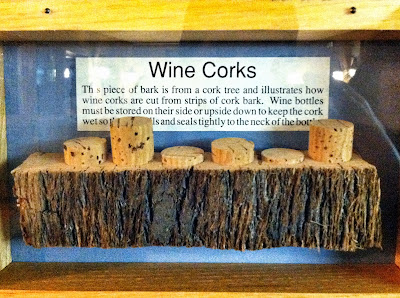 |
| The author, crushing |
The 2011 "fresh grape" season may be over, but it's not too early to start planning for 2012.
By Weston Eaton, with photos by Christina McDonald
People often ask me what I’ve been brewing. Lately I tell them wine. Whereas making beer entails extensive sanitation and rigorous methodology, wine, it seems, almost makes itself. Clearly grapes want to be wine; why else would their skins be covered in yeast, and their guts a fermentable wort? In tribute to the plum-colored carboys in my basement, and the stains on my hands, here’s a short tale of how to make your own wine from fresh grapes.
Each fall, just before the first heavy frost, grape farmers and field workers across the northern hemisphere snip their tight, precious bundles of fruit from countless rows of vines. While some go on to make their own wine, many others crate or juice their prized produce for sale to home winemakers. Bryan Taylor and his wife Carol have been doing just that since 1978. I’ve been buying grapes from Taylor Ridge Winery in Allegan for about five years and especially enjoy their reds. Siciliano’s is my other source for fresh grapes. Unlike the grapes from Bryan at Taylor Ridge, these are not locally supplied -- they are shipped in from California. While I’ve been fortunate enough to be let in on this family tradition, this season was the first time Siciliano’s owner Steve offered grape orders to the public*.
I always feel lucky when I get the call from Steve or Bryan that my grapes are in. One has to act fast. If the day is warm, the bees and fruit flies will not be far behind, nor will the mold and spoiling. Threat of spoilage, etc, has inspired me to use the grape harvest as an excuse to postpose other responsibilities, to gather my pails and buckets, and to set about crushing and de-stemming.
 |
| Bryan Taylor from Taylor Ridge |
While making wine from fresh grapes is an ancient tradition, relatively few people today get to experience the process. One reason for this is simply disjuncture in knowledge. Unless your grandfather, great aunt or pa made wine, you likely have not had the opportunity to watch crushed grapes ferment into plum-colored wine or, likewise, barrels of fresh cider transform into Applejack. However, like the growing interest in more localized and civic-minded food systems, more and more people are interested in home production as a means to complete their understanding of beer and wine. My theory is that home food and drink production -- activities like fermenting pickles, sauerkraut, wine and beer, or even gardening, planting a small orchard, bread making, canning, or herb drying -- can help re-enchant our modern, technologically obfuscated lives.
But even with traditional experiences, or a bit of reading or discussing, one also needs equipment and grapes to make fresh wine. These I feel are the biggest hurdles to getting into winemaking, although both are indeed obtainable. To understand these requirements, I’ll start by going over the process of actually making wine in simple terms. My purpose here is not to develop a guide book or “recipe” -- both are widely available
-- rather, for those of you who may be interested in getting started, I’d like simply to make the process more transparent, and less overwhelming. So what follows is less a “how to” and more a “what is this all about?”
 |
| Steve from Siciliano's |
The first step is acquiring grapes. If you live in Michigan, the two aforementioned sources are fantastic. Yet despite what supermarkets would have us believe, wine grapes are only available once a year. So if you’d like to make wine at home, your best bet is to locate a supplier during the summer months. You’ll need a significant amount of grapes (15-18 pounds) for each gallon of wine you’d like to make. Each gallon of juice will ultimately yield approximately five 750ml bottles of wine. To be clear, though, you need winemaking grapes, not eating grapes!
Once your grapes are ready, you’ll want to crush and de-stem your reds and ferment these on the skins, or crush, de-stem, and then immediately press your whites. This is where the a motorized crusher/de-stemmer and wine press come in handy. On Saturdays each fall Siciliano's lets customers use their equipment free of charge. Bryan too offers this service, and is happy to crush your grapes on site.
 |
| The Press |
For reds, the wine will ferment on the crushed skins for a week before you press. Skins contain the famous tannins, full of the health benefits clinicians love advocating and the structure your palate loves experiencing. Whites, however, bypass this stage, making for a lighter, more delicate wine. It's at this time that grapes first make their turn towards wine. Wild yeast naturally coats the skin of your grapes. When crushed, and when conditions are right (i.e., when it's warm) these yeasts begin fermenting the sugary juice. Wild yeasts have their own, unpredictable agency. I know of two groups of folks who rely on this more uncontrolled process: those I call “old timers,” who have little interest in “modern” practices, and more “experimental” professional winemakers, whose interest is in creating more “rustic” and “farmy” wines.
To control wild yeast -- to sanitize the ‘must’ -- winemakers use small amounts of sulfite. Sulfite gets a bad wrap. You’ll often hear people say it gives them headaches. I am of a different opinion. Drinking too little water and too much wine gives headaches, not sulfite. When you first crush or press (whites) your grapes, sulfite is added in small amounts, just enough parts per million to eradicate wild yeasts and prevent potential spoilage, but not enough to notice. For me, sulfite is the key difference between wine and beer. Whereas beer requires meticulous sanitation, sulfited wine is far more resilient. I would never imagine putting my hands in beer, much less sampling with the same spoon directly from the fermenter the first week of fermentation, but these profanities are nothing unusual for the winemaker. A day after adding sulfite, when its potency has diminished, more ingredients are added, including yeast nutrient (yeast food), pectic enzyme (helps break down fruit solids), sugar (if you are using lower gravity Michigan grapes) and, finally, winemaking yeast.
 |
| The photographer with grapes, pre-crush |
When fermentation begins you’ll notice two things. First, for reds, the carbon dioxide produced during fermentation drives the wine skins to the top of the fermenter, forming a "cap." Several times a day then you’ll need to "punch the cap" back down into the wine. Second, all this activity creates heat, and fermentation temperature is important. Often my wines will begin their lives in the cool, fall atmosphere of my garage.
After a week or so of punching the cap, or having your friends/family do it for you, scoop the skins into a wine press and then transfer your must into glass fermenters (carboys), being careful to keep the wine topped up to prevent contact with air. For the next few weeks your aim is to allow sediment to settle out of your wine, and to rack (transfer using a siphon) your wine off this settlement as often as necessary. Natural additives such as Bentonite can help clear your wine and reduce the number of rackings. Finally, your wine comes to rest in a clean carboy, possibly on some oak shavings, for a period of conditioning. I usually cellar my wine "in bulk" until the next wine season, and bottle last year’s vintage when this year’s crop is called in. If you enjoy wine, then try your hand at a batch and lay something down for the long road ahead.
*For the 2011 harvest, Siciliano's did not sell grapes, but only acted to facilitate connections between an independent grape broker and interested winemakers from our area. The arrangement for 2012 remains to be seen.



































